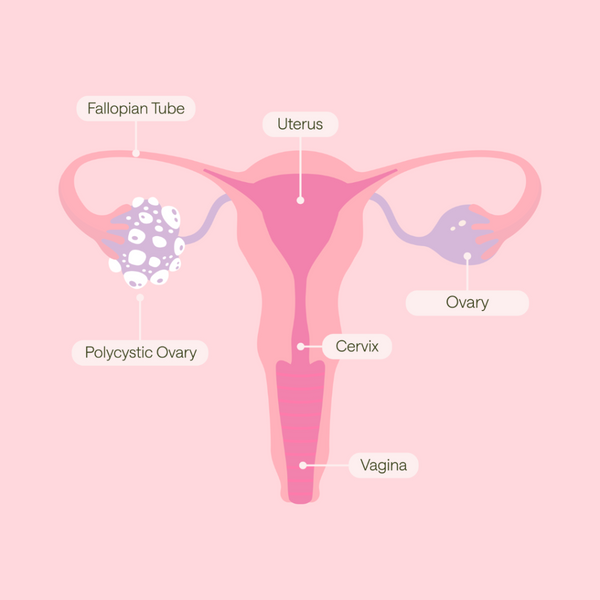For the first couple of weeks after your baby arrives, you may be lulled into a false sense of security, believing you have struck lucky and have a “quiet baby”.
But that all comes crashing down when your tiny bundle of joy suddenly finds their voice, and all hell lets loose! How can a 7lb newborn emit such a racket and keep it going for so long?
You liken it to an air-raid siren or a screeching cat, and, try as you might, you cannot ignore it.
In fact, quite the opposite, you need to stop the noise, so you react.
You sweep in, gather up your baby, and start working through the list of things that could be causing this tiny siren so much angst.
But what do you do if your newborn cries when put down? And how do you help a newborn crying at night?
Read on to learn how to tackle newborn crying with our top tips, recommended by qualified midwives!
Why do babies cry, and what causes the tears?
Healthy babies cry, and that is a fact, up to several hours a day.
Crying is an automatic reflex in babies and is one of the few ways they can communicate their needs.
Babies do not cry deliberately until they are about six months old when they learn that fussing or crying can trigger certain reactions.
Newborn cries are meant to attract the attention of their parents to make them aware that they feel:
- Hungry
- Too cold or too hot
- Over-tired
- Wet or dirty
- Lonely or scared
- Ill or in pain
- Bored
- Uncomfortable
What to do if your baby is crying
If your baby is crying, try these steps first:
- Hold them and soothe them.
- Check that they are clean, dry, fed, and warm.
- Cuddle them gently – they may just be releasing stress in the safety of your arms.
If this doesn’t help, check their temperature (the normal range is 36.4-38C) and check them for rashes, bruises, or anything else that could suggest they are unwell.
If you suspect your baby is crying from pain or because they are unwell, always seek advice from a healthcare professional immediately. You can contact your GP, Midwife, Health Visitor, or NHS 111, or take them to A&E or ring 999 if there is an emergency.
What are the different types of baby cries?
The early weeks and months of being a parent will be spent responding to your baby’s cries without always understanding what they need or want.
Does your baby need a feed, a change, or a cuddle, or are they just ready for a night of sleep?
As time progresses, you tune into your baby much more instinctively.
As you develop routines with your baby, you may also start to anticipate them crying. For example, if the baby is due for a nap, they may get fractious and cry.
You can respond to their needs by cuddling, rocking, or putting them down to sleep.
If you suspect they might be hungry, try them at the breast. If some time has passed since their last feed, prepare their meal before they become too upset to feed correctly.
A fussy cry
A fussy cry is often an early sign of tiredness or feeling overwhelmed or could be a warning sign of impending hunger. It goes hand-in-hand with lip-smacking, rooting, and fist-sucking.
If you attend to fussing early, you may avoid the stress and upset of a more persistent cry.
A high-pitched cry
A high-pitched cry that sounds quite distressed and different from your baby’s usual cry may indicate pain or illness. So, these should prompt you to check their physical wellbeing (temperature, breathing, colour, etc.) This is usually accompanied by your newborn kicking legs and crying, which can signal more distress than usual.
A sharp cry accompanied by pulling up of knees and a screwed-up angry face may mean your baby has a tummy ache and needs winding or a massage.
By about six months, a baby can be more deliberate in crying. You will start to find it easier to work out what they need or want from you.
How much crying is normal for a newborn?
The average baby can cry for approximately 2 hours per day. Some cry less, and some cry more (up to 5-6 hours per day), which often peaks at 6-8 weeks.
Usually, by 3-4 months, a baby will cry less, but, again, this is individual to your baby.
This time frame is also when you should see fewer instances of crying in sleep. Newborn babies become less prone to nighttime crying as they grow older, so you should find that you face fewer issues over time.

How long should you let a newborn cry?
In an ideal world, the answer would be “as little as possible in an ideal world!” But we know that’s not always a helpful answer to the question.
In the not-too-distant past, experts advised us to let our babies “cry it out”. It was believed it would teach babies that crying wouldn’t get them what they wanted.
It was suggested that being reactive and a responsive parent would spoil our babies, and we would live to rue the day we picked them up, cuddled them, and reassured them. The reality couldn’t be further from the truth!
Letting your baby cry without tending to them can significantly increase their stress levels. Babies cannot measure time, so a minute of feeling upset and ‘abandoned’ can cause them to experience deep distress.
It is usual for your baby to cry. By responding quickly to their cries, we teach them that they have not been abandoned. They learn they are safe and loved, and their needs are tended to.
This helps you build a trusting and loving relationship, which benefits both the parents and the baby alike.
If, for whatever reason, you cannot respond to your baby’s cries promptly, don’t be harsh on yourself. Here are some tips to bear in mind:
Make sure your baby is in a safe space
Place your baby safely in their cot, basket or crib. Talk to them in a calming voice while you sort out whatever you are dealing with. You may be in the shower, answering the doorbell, or dealing with an older sibling.
Ask for support
If your baby’s persistent crying is causing you to feel anxious, upset, or angry, ask for support asap.
Call a friend, family or your partner, or go to your neighbour’s house and ask them to hold the baby while you take yourself out of the situation for some time.
Remove yourself from the situation temporarily
If asking for support is not feasible, ensure your baby is safe and take yourself out of the scenario.
Go to another room. Take some deep breaths. Make yourself a cup of tea or a glass of juice. Anything that will help you recharge your batteries before returning to your baby and helping them to calm down.
Tips for calming your baby down
Your newborn baby has not yet learned the skills to self-soothe. They will rely on you to help calm them down when they cannot be settled in other ways. Try one or more of the following tips, or you may find others that better suit you and your baby.
1. Place your baby directly on your skin
Skin-to-skin is always a great first option to try with your newborn baby. Strip the baby down to their nappy and place them inside your top directly onto your chest. By being able to smell and feel your heartbeat, your newborn is transported back to the safety of the womb.
2. Wear your baby in a sling
If you are out and about or busy at home, try placing the baby in a sling. Being up close to you and the motion is often sufficient to calm a fractious baby down.
3. Take your baby out
Go out with your baby in a pram or sling, or go for a drive to try to calm them down.
Again, the rocking motion and even a change of scenery, sounds, and smells may be enough to soothe them. Babies get bored, too, and new stimuli may distract them from their woes.
4. Bath the baby
You can bathe them alone or have them join you in a bath. Here are some quick tips:
- Ensure the water temperature is neither too hot nor too cold for them
- Keep bath time short to avoid them becoming cold or overly stimulated
- Not all babies are soothed by baths, so follow your baby’s cues to gauge their feelings
- Have a warm towel to wrap them in once the bath is over
Read our guide on bathing your baby here for more tips.
5. Play white noise or classical music
White noise replicates the muffled sounds of the womb. You could try the following:
- Putting on the vacuum cleaner
- Putting on the washing machine
- Putting on the hairdryer
- Downloading a white noise app
- Playing low-volume classical music (just nothing too dramatic!
7. Try baby massage
You can use gentle baby massage techniques to help soothe a fractious baby. Always use high-quality baby oil, such as our Mega Calm Massage Balm, to reduce the risk of damaging your baby’s delicate skin.

If you have tried several things to calm the baby down, look at the following links for more advice www.iconcope.org or www.cry-sis.org.uk/, or contact a friend, family member, or healthcare professional for advice and support.
Normalising baby crying
Newborn babies can’t talk, and it may seem impossible to understand their cries. Yet, babies have powerful ways of communicating with us. And while we may not always feel it to start with, our instincts help us understand them.
PURPLE is an acronym developed in the USA to describe a crying stage that some babies go through when they cry for long periods and resist soothing no matter what you try.
PURPLE aims to normalise this phase and dispel the confusion and worry that can overcome parents when their babies cry for long periods
- Peak of crying – this is usually around eight weeks old
- Unprovoked – baby may start/stop crying for no apparent reason
- Resists soothing – no matter what you try, they continue to cry
- Pained expression – baby may look in pain, but babies in the PURPLE phase usually are not in pain
- Long periods of crying – often up to hours at a time
- Evening peak – babies tend to cry more during the late afternoon/early evening than earlier in the day.

If you recognise these characteristics in your baby, their crying will hopefully not upset or worry you as much, and you’ll be able to feel calmer when caring for them.
Try to soothe them with our recommended tips for calming your baby down. There are lots of methods to choose from, so hopefully, there’s something that’ll work for your little one.
Just remember to look after your emotional well-being, too.
So, ask your partner, family, friends, or even a neighbour to take care of your baby so you can have a break. Aim to take as long as you need to allow your nervous system to regulate before returning to your baby.
Babies cry a lot, and some cry much more than others
Although you can usually settle a newborn by following the usual guidance, the reality is that your baby will refuse to be soothed in some instances. On those occasions, getting them to stop wailing will feel nearly impossible.
Although babies can’t use words, they can communicate, and our instincts are there to help us hear what they’re trying to say.
We are told many things that can override our instincts, but in the end, we know our babies better than anyone. And it’s ok to do what feels right for them and us.
If your baby is struggling to sleep through the night, or you feel like you’re constantly feeding them in an attempt to calm them down, give our tips a try and see if they help!
Calm your baby with our soothing massage balm
Our expert midwives have developed a range of high-quality baby skincare products designed with your newborn’s health and wellbeing in mind. Check out our Mega Calm Massage Balm, specially formulated to relax and soothe your baby.



















